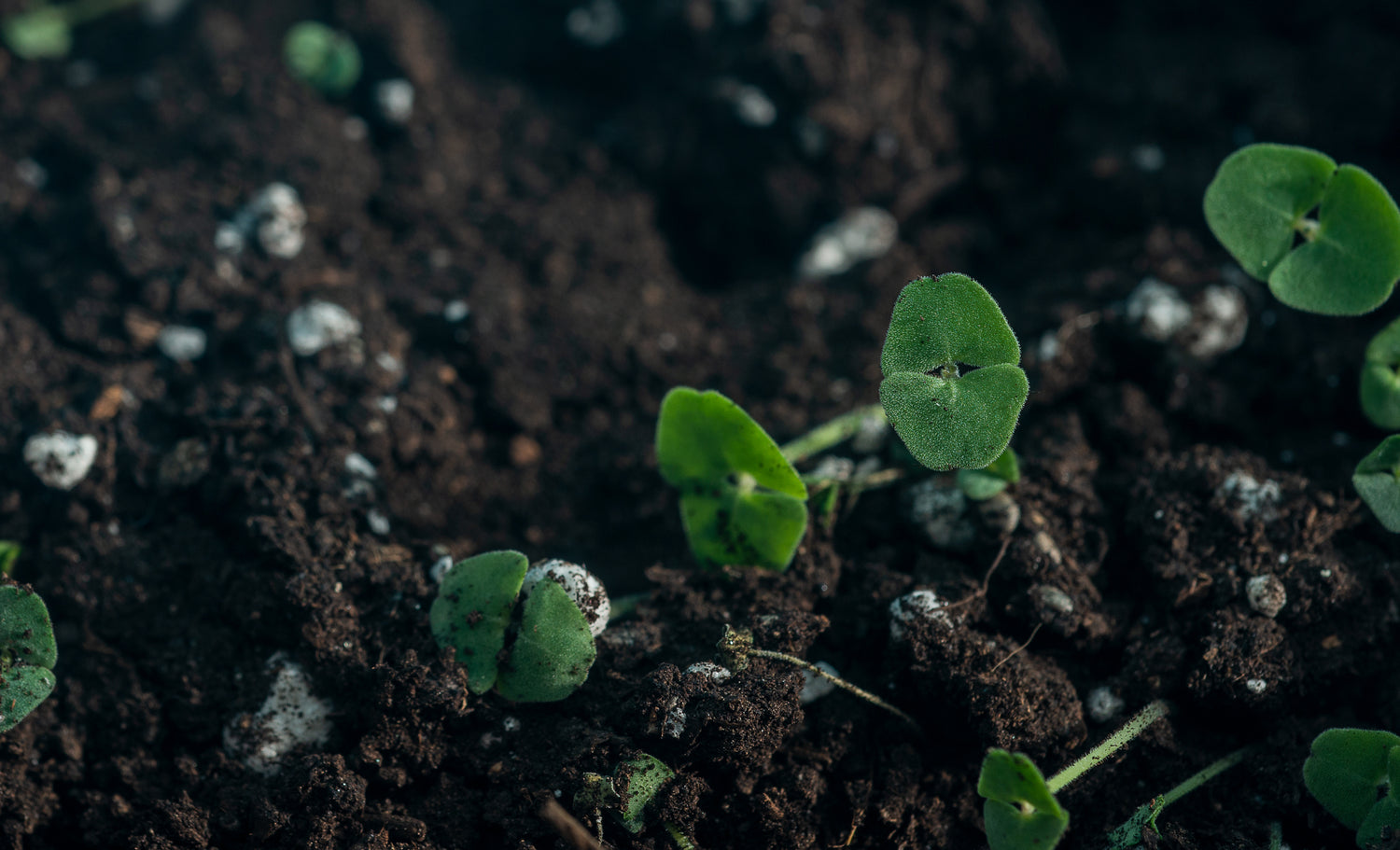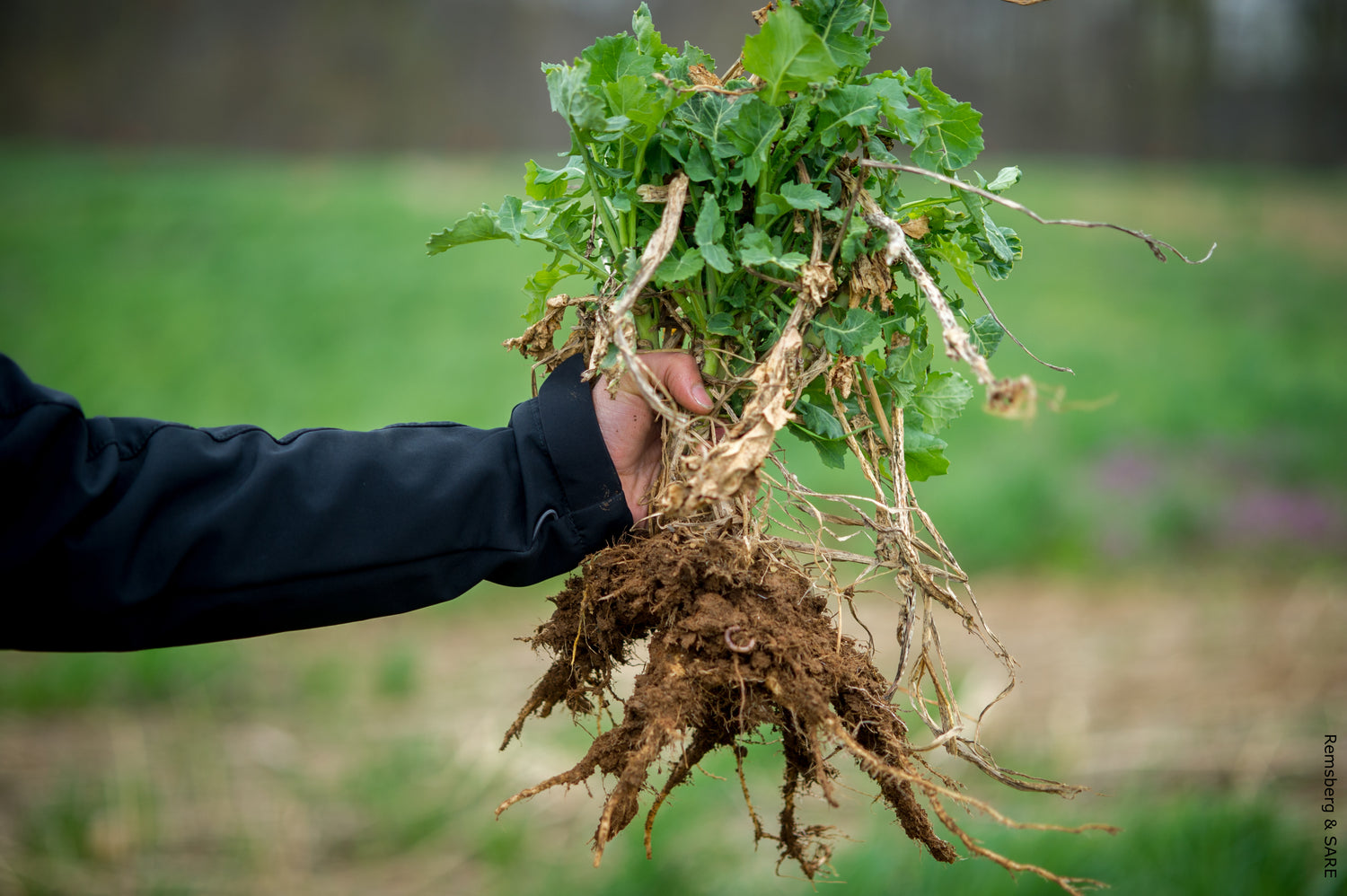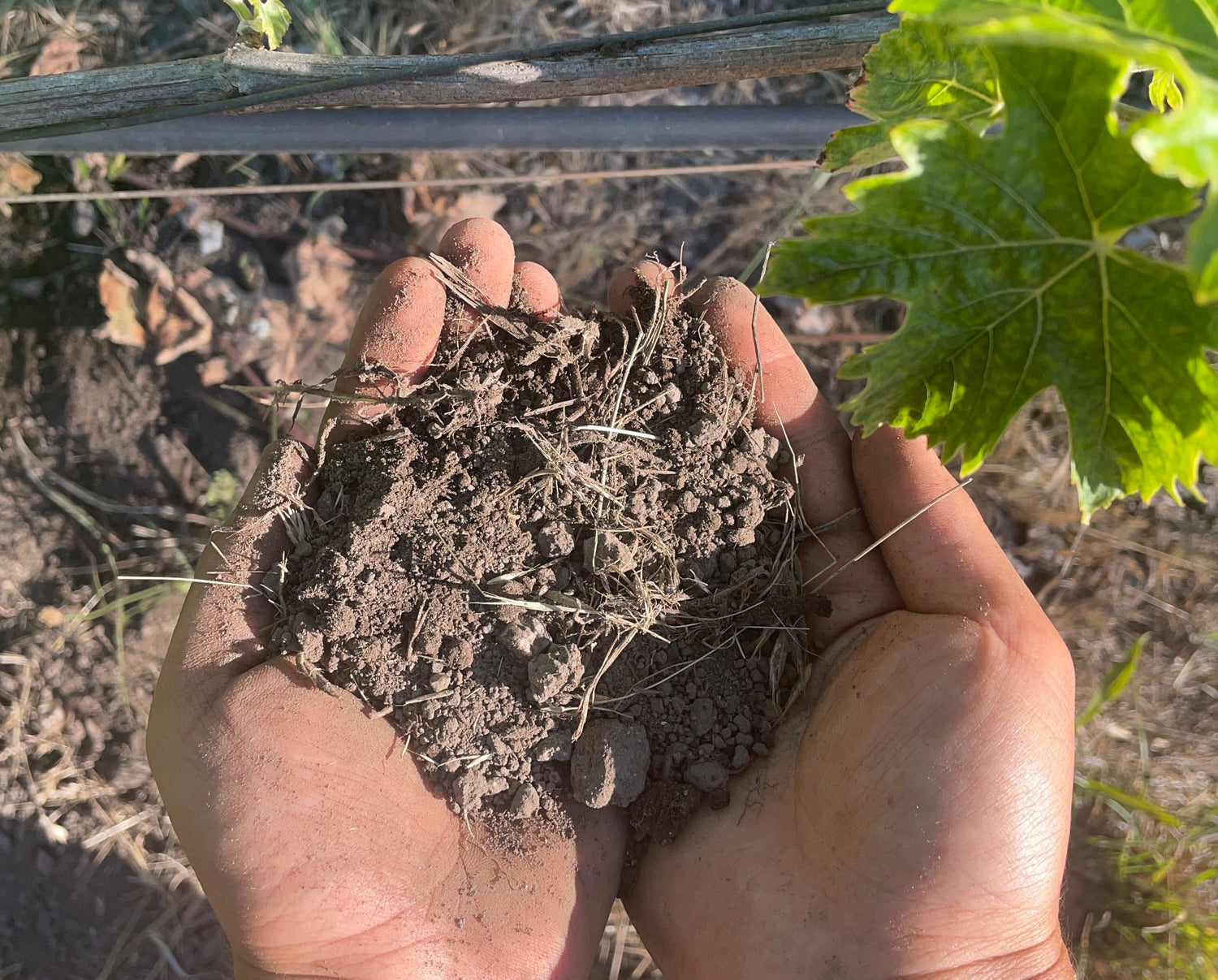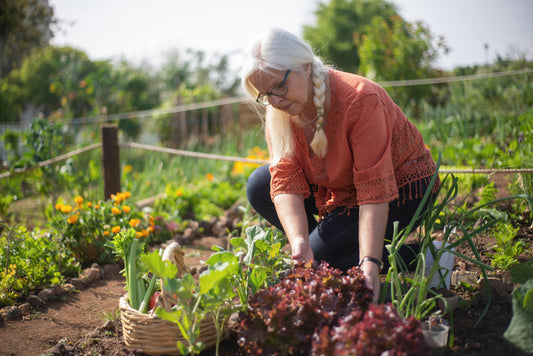Agricultural innovation has never been more critical as climate change accelerates, demanding crop varieties that can withstand extreme weather, changing soil conditions, and shifting growing seasons. Today's plant breeders are employing revolutionary techniques that compress decades of traditional breeding into years, creating resilient crops at unprecedented speed.
Racing Against Climate Change: How Advanced Crop Breeding is Creating Tomorrow's Resilient Food Systems
Modern crop breeding techniques are accelerating variety development by 300-600%, with speed breeding achieving up to 6 generations per year, CRISPR editing enabling precise genetic modifications in over 120 crop species, and genomic selection reducing breeding cycles from 15 years to just 7-10 years.
The Urgency of Climate-Smart Crop Development
The race to develop climate-resilient crops has never been more urgent. With global population expected to reach 10 billion by 2050 and climate change threatening crop yields worldwide, traditional breeding methods that take 10-15 years to produce new varieties simply cannot keep pace with rapidly changing environmental conditions.
Climate change is already impacting crop production: Rising temperatures, altered precipitation patterns, and increased frequency of extreme weather events pose serious threats to global food security. Traditional breeding approaches have delivered yield improvements of 1-2% annually, but experts estimate we need gains of 2.4% annually to meet future food demands while adapting to climate challenges.
The economic stakes are enormous. Climate change could reduce global crop yields by 10-25% by 2050, representing potential losses of hundreds of billions of dollars annually. Drought alone causes an estimated $6-8 billion in annual crop losses in the United States, while heat stress affects yield quality and quantity across major growing regions.
| Climate Threat | Affected Crops | Breeding Targets | Success Rate | Time to Market |
|---|---|---|---|---|
| Drought Stress | Wheat, Maize, Rice | Water use efficiency, deep roots | 60-80% | 7-10 years |
| Heat Tolerance | Wheat, Tomato, Legumes | Thermostability, heat shock proteins | 45-70% | 8-12 years |
| Salinity Tolerance | Rice, Barley, Quinoa | Ion exclusion, osmotic adjustment | 50-75% | 6-9 years |
| Disease Pressure | All major crops | R-genes, broad-spectrum resistance | 70-90% | 5-8 years |
| Flooding Tolerance | Rice, Wheat, Soybean | Submergence tolerance, aerenchyma | 55-80% | 6-10 years |
CRISPR Gene Editing: Precision Agriculture at the Molecular Level
CRISPR-Cas9 technology has revolutionized crop breeding by enabling precise genetic modifications that would be impossible through traditional methods. This breakthrough technology allows scientists to edit plant genomes with unprecedented accuracy, targeting specific genes while avoiding the random mutations associated with conventional breeding.
CRISPR applications span over 120 crop species: Since its first agricultural application in 2013, CRISPR has been successfully deployed in major food crops including wheat, rice, maize, soybeans, tomatoes, and potatoes. The technology offers several advantages over traditional genetic modification, including the ability to make changes without introducing foreign DNA, faster development timelines, and more precise targeting.
Recent achievements demonstrate CRISPR's transformative potential. In rice, researchers have used base editing to create varieties with enhanced bacterial blight resistance by targeting the Xa13 and Xa25 genes. Prime editing applications have developed herbicide-resistant rice varieties by modifying the OsALS gene, enabling more targeted weed control strategies while reducing environmental impact.
Multiple gene targeting accelerates trait development: Advanced CRISPR strategies now enable simultaneous editing of up to 12 genes, dramatically expanding the scope of possible improvements. In maize, researchers successfully targeted multiple gene families simultaneously to improve drought tolerance, creating plants with enhanced water-use efficiency that outperformed traditional varieties under stress conditions.
The "rewilding" concept represents an innovative CRISPR application where breeders reintroduce beneficial traits from wild crop relatives into elite cultivars. This approach captures genetic diversity lost during domestication while maintaining the high yields and quality characteristics of modern varieties. Functional markers derived from these modifications enable breeders to track beneficial alleles with precision.
Speed Breeding: Accelerating Generation Cycles
Speed breeding represents one of the most practical innovations in modern crop development, dramatically reducing the time between plant generations through environmental manipulation. Originally developed by NASA for space agriculture, this technique has found widespread application in terrestrial crop improvement programs.
Remarkable acceleration of breeding cycles: Speed breeding can achieve up to 6 generations per year for spring wheat, durum wheat, barley, chickpea, and pea, compared to the traditional 2-3 generations under normal greenhouse conditions. Canola breeding programs report 4 generations annually using these techniques, representing a 100-200% improvement in breeding efficiency.
| Crop Species | Traditional Generations/Year | Speed Breeding Generations/Year | Improvement Factor | Light Requirements |
|---|---|---|---|---|
| Spring Wheat | 2-3 | 6 | 200-300% | 22h photoperiod |
| Barley | 2-3 | 6 | 200-300% | 22h photoperiod |
| Chickpea | 1-2 | 6 | 300-600% | 22h photoperiod |
| Canola | 2 | 4 | 200% | 20h photoperiod |
| Pea | 2 | 6 | 300% | 22h photoperiod |
The technology relies on several key environmental controls. Extended photoperiods of 20-22 hours using LED technology replace natural daylight cycles, while carefully controlled temperatures (typically 22°C day/17°C night) and high humidity (>70%) optimize plant development. Modern LED systems have reduced energy costs significantly, making speed breeding more economically viable for breeding programs.
Integration with high-density planting systems: Speed breeding protocols enable planting densities of up to 1,000 plants per square meter, dramatically increasing the number of breeding lines that can be evaluated simultaneously. This high-density approach, combined with single seed descent (SSD) methods, allows breeders to advance multiple populations efficiently while maintaining genetic diversity.
Cost-effective implementations are expanding access to speed breeding technology. Punjab Agricultural University in India has developed field-based speed breeding protocols that harvest three wheat generations annually without expensive growth chambers, demonstrating how the technology can be adapted for resource-limited environments.
Genomic Selection and Marker-Assisted Breeding
Genomic selection (GS) and marker-assisted selection (MAS) have transformed plant breeding from a phenotype-driven process to a data-intensive, precision-guided endeavor. These molecular breeding techniques enable breeders to select superior varieties based on genetic markers rather than waiting for field performance data.
Genomic selection offers superior performance for complex traits: Unlike traditional MAS, which relies on markers linked to known genes, genomic selection uses genome-wide markers to predict breeding values for complex traits controlled by multiple genes. Studies consistently show that GS outperforms conventional phenotypic selection, particularly for traits with low heritability or those difficult to measure directly.
The efficiency gains are substantial. Genomic selection can increase genetic gains by 20-50% compared to traditional breeding methods while reducing breeding cycles by 2-5 years. In maize breeding programs, GS has demonstrated the ability to predict grain yield with accuracies of 0.60-0.80, enabling effective selection without extensive field testing.
Marker-assisted selection accelerates specific trait integration: MAS excels in transferring well-characterized genes for traits like disease resistance, quality characteristics, and simple stress tolerance mechanisms. The technology utilizes distinctive DNA sequences as indicators for specific genes, enabling breeders to identify desired traits early in plant development without waiting for mature plant characteristics.
Modern marker systems have evolved dramatically in capability and cost-effectiveness. Single Nucleotide Polymorphisms (SNPs) now enable large-scale genotyping of 1,536 polymorphic sites in 384 individuals simultaneously, while costs have decreased by over 90% in the past decade. Functional markers derived directly from genes of interest offer even greater precision than traditional random DNA markers.
Developing Climate-Resilient Varieties
The development of climate-resilient crop varieties requires a multi-faceted approach targeting the specific environmental stresses that climate change intensifies. Breeders are focusing on key traits that enable crops to maintain productivity under increasingly challenging conditions.
Drought tolerance represents the highest priority: Water scarcity affects over 40% of global agricultural land, making drought tolerance the most crucial climate adaptation trait. Breeding programs are developing varieties with enhanced water use efficiency, deeper root systems, and improved osmotic adjustment capabilities. Pearl millet, naturally adapted to arid conditions, serves as a model for developing drought tolerance in major crops.
Heat tolerance has become increasingly important as global temperatures rise. Research focuses on thermostable proteins, improved cellular membranes, and enhanced heat shock protein production. Successful heat-tolerant varieties include chickpea lines like ICC 4958 and ICC 8261, which maintain stable yields during extreme temperature events.
| Crop/Variety | Primary Adaptation | Key Mechanisms | Yield Advantage | Commercial Status |
|---|---|---|---|---|
| Pearl Millet | Drought + Heat | Deep roots, osmotic adjustment | 50-80% under stress | Widely commercial |
| Quinoa (INIA Salcedo) | Drought + Salinity | Waxy leaves, flexible roots | 40-60% under stress | Commercial |
| Sweet Potato (Beauregard) | Drought | Extensive root networks | 30% water reduction | Commercial |
| Sorghum (Drought-tolerant) | Drought + Heat | Stay-green, efficient water use | 40% under drought | Commercial |
| Cassava | Drought | Water storage in roots | Maintains yield | Traditional use |
Salinity tolerance addresses soil degradation challenges: Climate change exacerbates soil salinization through altered precipitation patterns and sea-level rise. Breeding programs focus on ion exclusion mechanisms, salt compartmentalization, and osmotic adjustment. Rice varieties with modified OsNramp5 genes show reduced cadmium accumulation while maintaining agronomic performance, addressing both salinity and heavy metal contamination.
Multi-stress tolerance represents the frontier of climate adaptation breeding. Future varieties must withstand combinations of drought, heat, salinity, and biotic stresses simultaneously. Advanced breeding techniques enable trait stacking, where multiple resistance mechanisms are combined in single varieties through precise genetic manipulation and marker-assisted selection.
Innovative Breeding Techniques and Technologies
Beyond the major technological advances, plant breeders are employing numerous innovative techniques to accelerate variety development and enhance adaptation capabilities. These approaches complement primary breeding methods and offer solutions to specific challenges in crop improvement.
Doubled haploid (DH) technology accelerates line development: DH breeding produces completely homozygous lines in a single generation, compared to 6-8 generations required through traditional self-fertilization. Winter wheat DH lines carrying the eyespot resistance gene Pch1 have been successfully developed and commercialized, demonstrating the technology's practical value for disease resistance breeding.
High-throughput phenotyping platforms revolutionize trait evaluation by enabling automated measurement of thousands of plants simultaneously. These systems use advanced imaging, sensors, and machine learning to quantify complex traits like canopy temperature, leaf area, root architecture, and stress responses. The technology enables breeders to evaluate many more breeding lines than traditional manual methods allow.
De novo domestication offers access to wild genetic diversity: This innovative approach introduces domestication alleles into wild genetic backgrounds using molecular-assisted backcrossing or gene editing. Wild crop relatives often possess superior stress tolerance but lack the yield and quality characteristics of cultivated varieties. De novo domestication combines the best of both worlds, creating prebreeding material with enhanced climate resilience.
Multi-environment testing has become more sophisticated with climate modeling and controlled environment facilities. Breeders can now simulate future climate scenarios and test breeding lines under projected conditions, ensuring new varieties will perform well under the climate conditions they will actually face during their commercial lifespan.
Economic and Implementation Challenges
Despite the tremendous potential of advanced breeding technologies, significant challenges remain in their widespread implementation. Economic constraints, technical limitations, and regulatory hurdles continue to shape the adoption of these innovations across different regions and crops.
Infrastructure requirements create barriers for developing regions: Advanced breeding techniques often require substantial investments in laboratory facilities, growth chambers, and specialized equipment. CRISPR facilities can cost millions of dollars to establish, while speed breeding requires precise environmental control systems that may be prohibitively expensive for smaller breeding programs.
However, innovative solutions are emerging to address these challenges. Speed breeding capsules constructed from shipping containers offer lower-cost alternatives to sophisticated growth chambers. Regional speed breeding centers provide training and services to multiple breeding programs, sharing costs and expertise across organizations.
Regulatory frameworks lag behind technological capabilities: Gene editing regulations vary significantly between countries, creating uncertainty for breeding programs developing CRISPR-edited varieties. Some jurisdictions treat gene-edited crops as conventional varieties if no foreign DNA is introduced, while others apply the same regulations used for transgenic crops.
Intellectual property concerns also impact technology adoption. Many advanced breeding techniques are protected by patents, potentially limiting access for public breeding programs and smallholder farmers. Efforts to develop open-source breeding platforms and ensure freedom to operate for humanitarian applications continue to evolve.
Success Stories and Commercial Applications
Real-world applications of advanced breeding techniques demonstrate their practical value in addressing climate challenges. Success stories from around the world showcase how these technologies translate from laboratory innovations to farmer field solutions.
Demonstrable yield improvements under stress conditions: In Africa, doubled haploid maize varieties derived from commercial hybrids show remarkable performance improvements. One DH maize hybrid demonstrates 44.2% improved yield under drought stress and 23% improved yield under optimal conditions compared to the best-performing commercial hybrids.
Disease resistance achievements highlight breeding efficiency gains. Winter barley DH lines developed through androgenesis show enhanced tolerance to drought and cold stress compared to their parent varieties. QTL mapping in these homozygous lines reveals previously unknown genes associated with stress tolerance, providing new targets for future breeding efforts.
Commercial successes validate breeding investments: Multiple rice DH varieties have achieved commercial success globally, including Dama in Hungary, Tanghuo 2 and Tanfeng 1 in China, Hirohikari and Kibinohana in Japan, and Phalguni and Satyakrishna in India. These varieties demonstrate higher yields and improved stress tolerance compared to conventional varieties.
The AC-1 rice line developed by the International Rice Research Institute specifically for salinity tolerance has been successfully commercialized in the Philippines and Bangladesh, helping farmers in coastal areas maintain productivity despite increasing soil salinity from sea-level rise and altered precipitation patterns.
Future Directions and Emerging Technologies
The future of crop breeding for climate adaptation will likely involve even more sophisticated technologies and integrated approaches. Emerging developments promise to further accelerate variety development while enhancing the precision and scope of genetic improvements.
Integration of artificial intelligence and machine learning: Advanced algorithms are beginning to optimize breeding decisions by analyzing vast datasets combining genomic, phenotypic, and environmental information. These systems can predict which crosses will produce the best offspring and identify optimal selection strategies for specific environments and breeding goals.
Next-generation gene editing tools beyond CRISPR-Cas9 offer enhanced capabilities. Prime editing and base editing enable more precise modifications, while new Cas proteins expand the range of possible targets. These technologies promise even greater precision in developing climate-adapted varieties.
Digital agriculture platforms connect breeding with field performance: Internet of Things (IoT) sensors, satellite imagery, and mobile applications enable real-time monitoring of variety performance across diverse environments. This information feeds back into breeding programs, creating data-driven selection strategies based on actual field conditions.
The convergence of biotechnology, data science, and environmental modeling represents the next frontier in crop breeding. Future breeding programs will likely operate as integrated systems combining multiple technologies to rapidly develop varieties adapted to specific regional climate projections and farming systems.
Looking Forward: Building Tomorrow's Food Security
The transformation of crop breeding represents one of humanity's most critical responses to climate change. As traditional agriculture faces unprecedented challenges, the innovative techniques and technologies described here offer pathways to maintain and enhance food security for a growing global population.
The integration of multiple advanced breeding approaches offers unprecedented opportunities: Combining CRISPR gene editing with speed breeding and genomic selection creates breeding pipelines capable of developing new varieties in 5-7 years instead of the traditional 10-15 years. This acceleration is essential as climate conditions change faster than traditional breeding cycles can respond.
Success requires coordinated global efforts involving public research institutions, private companies, and international development organizations. Technology transfer and capacity building ensure that advanced breeding techniques benefit farmers worldwide, not just those in developed countries with sophisticated research infrastructure.
The economic and social implications extend far beyond agriculture. Climate-resilient crops contribute to rural economic stability, reduce food price volatility, and enhance nutrition security for vulnerable populations. Investment in advanced breeding technologies represents one of the most cost-effective approaches to climate adaptation and food security.
As we face an uncertain climatic future, the plant breeders armed with these revolutionary tools stand at the forefront of humanity's adaptation efforts. Their success in developing resilient, productive, and sustainable crop varieties will largely determine our ability to feed the world while protecting the environment for future generations.
Sources
- Watson, A., et al. 2018. Speed breeding in growth chambers and glasshouses for crop breeding and model plant research. Nature Protocols, 13(12), 2944-2963. https://www.nature.com/articles/s41596-018-0072-z
- Hickey, L.T., et al. 2019. Breeding crops to feed 10 billion. Nature Biotechnology, 37(7), 744-754. https://www.nature.com/articles/s41477-017-0083-8
- Jinek, M., et al. 2020. Engineering crops of the future: CRISPR approaches to develop climate-resilient and disease-resistant plants. Genome Biology. https://genomebiology.biomedcentral.com/articles/10.1186/s13059-020-02204-y
- Budhlakoti, N., et al. 2022. Integrated Genomic Selection for Accelerating Breeding Programs of Climate-Smart Cereals. Genes, 14(7), 1484. https://www.mdpi.com/2073-4425/14/7/1484
- Varshney, R.K., et al. 2022. Genomic Selection: A Tool for Accelerating the Efficiency of Molecular Breeding. Frontiers in Genetics. https://www.frontiersin.org/journals/genetics/articles/10.3389/fgene.2022.832153/full
- Scheben, A., et al. 2017. Towards CRISPR/Cas crops – bringing together genomics and genome editing. New Phytologist, 216(3), 682-698. https://nph.onlinelibrary.wiley.com/doi/10.1111/nph.14702
- Raza, A., et al. 2024. Recent advances of CRISPR-based genome editing for enhancing staple crops. Frontiers in Plant Science. https://www.frontiersin.org/journals/plant-science/articles/10.3389/fpls.2024.1478398/full
- Singh, R., et al. 2024. Creating Climate-Resilient Crops by Increasing Drought, Heat, and Salt Tolerance. Plants, 13(9), 1238. https://www.ncbi.nlm.nih.gov/pmc/articles/PMC11085490/
- Oliveira, T.M., et al. 2020. A scoping review of adoption of climate-resilient crops by small-scale producers. Nature Plants, 6(10), 1231-1241. https://www.nature.com/articles/s41477-020-00783-z
- Ghosh, S., et al. 2022. Smart breeding approaches in post-genomics era for developing climate-resilient food crops. Frontiers in Plant Science. https://www.frontiersin.org/journals/plant-science/articles/10.3389/fpls.2022.972164/full
- Collard, B.C.Y. & Mackill, D.J. 2008. Marker-assisted selection: an approach for precision plant breeding in the twenty-first century. Philosophical Transactions of the Royal Society B. https://royalsocietypublishing.org/doi/10.1098/rstb.2007.2170
- Pradhan, S.K., et al. 2021. Recent advancements in molecular marker-assisted selection and applications in plant breeding programmes. Journal of Genetic Engineering and Biotechnology. https://jgeb.springeropen.com/articles/10.1186/s43141-021-00231-1
- Alam, M.M., et al. 2022. Strategies for accelerating genetic gains in crop plants: special focus on speed breeding. Plant Breeding. https://pmc.ncbi.nlm.nih.gov/articles/PMC9723045/
- Ahmad, S., et al. 2023. Plant breeding advancements with "CRISPR-Cas" genome editing technologies will assist future food security. Frontiers in Plant Science. https://www.frontiersin.org/journals/plant-science/articles/10.3389/fpls.2023.1133036/full
- Li, M., et al. 2021. Application of Gene Editing for Climate Change in Agriculture. Frontiers in Sustainable Food Systems. https://www.frontiersin.org/journals/sustainable-food-systems/articles/10.3389/fsufs.2021.685801/full
- Jiang, Y.F., et al. 2019. CRISPR technology is revolutionizing the improvement of tomato and other fruit crops. Horticulture Research. https://www.nature.com/articles/s41438-019-0159-x
- Guadarrama-Escobar, O.R., et al. 2024. Back to the future for drought tolerance. New Phytologist. https://nph.onlinelibrary.wiley.com/doi/10.1111/nph.19619
- Innovative Genomics Institute. 2024. CRISPR in Agriculture: 2024 in Review. https://innovativegenomics.org/news/crispr-in-agriculture-2024/
- Yang, H., et al. 2024. Climate Change—The Rise of Climate-Resilient Crops. Plants, 13(4), 490. https://www.mdpi.com/2223-7747/13/4/490
- Joshi, R., et al. 2024. Tools and Techniques to Accelerate Crop Breeding. International Journal of Molecular Sciences. https://pmc.ncbi.nlm.nih.gov/articles/PMC11174677/












